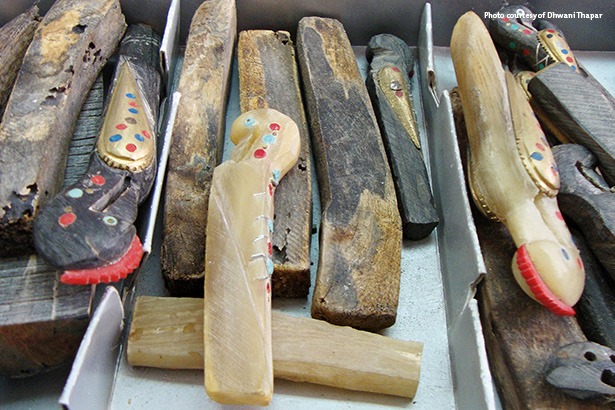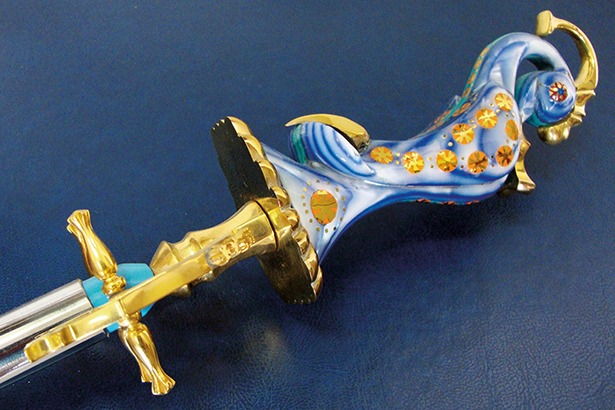The southern town of Jezzine is renowned for its ornate firebird cutlery. Made of elaborately inlaid bone and a phoenix-shaped handle, the design of the firebird changes from family to family but the story is the same.

The Source
Traditionally the black firebird handles were carved from dusty brown cow or bull horns that transform into a lustrous jet-black color when polished. These raw materials used to be imported, but now they are mainly found locally. The white firebird handles were made of camel bone and sourced from Egypt, Iraq and Syria as well as parts of Lebanon including Beirut, Ebel Saki, Jezzine and Tripoli. Pre-stamped with the name of the company manufacturing it, the stainless steel is usually from Italy or France. The firebirds are decorated with thin colored resin pipes, and pure silver sheets and brass, both of which are sourced from Lebanon to support domestic production.
Due to cost and efficiency issues, many of the families have resorted to phasing out the use of natural materials, substituting with artificial materials instead. The former is also becoming harder to source, partly due to increased environmental awareness.
Furthermore, natural bone cutlery requires nearly double the work and is almost double the price. Sometimes, demand is low because of the increased cost due to the extra attention required during production.
The Process
- Each firebird is made of two identical pieces of horn/bone that are joined together.
- From a whittled finger-sized section that is clamped steady, a distinct bird-shaped outline is formed and when satisfactorily uniform, the piece is buffed.
- Interlocking two millimeter grooves are inlaid with tiny strips of silver and filed to create a silver-lined look.
- The brass wings come with a series of pre-bored small holes. Aligning holes are drilled into the corresponding carved bird piece. On a wooden block, metal ‘teardrops’ are shaped with a mallet, then hand-drilled and nailed in place.
- Thin colored resin pipes are cut into half-inch pieces, fitted into the brass wings and filed even. They add a touch of color to the bird.
- The head is etched with an electric circular saw. Red resin cut into small triangular shapes is used to create the traditional “rooster” comb. Individual hand-sewn notches achieve the pleasing scalloped effect.
- For 30 seconds, the bird is buffed on a machine that resembles a spongy wheel, covered with something akin to soft sandpaper. Next is smoothing with what looks like a mini black rubber tire, followed by an efficient polishing on a third wheel similar to a small mop.
Finished, the piece is hot to touch. The crafted components of the Jezzine bird are attached to the stainless steel cutlery body and it is then ready for sale.

Time frame
When handmade with natural materials, the average time to make a single phoenix from whittling to polishing is about 45 minutes. Factories work six to eight hour days and make a total of eight to twelve pieces per person.
Instructions for care
For the handle end, that is made from natural materials, it is best to manually wipe away any food residue with a moist cloth. To clean the serving side, use a very mild solution of soap and run it under a gentle stream of room temperature water. For artificial pieces, clean both the handle and metal with standard cleaning agents. Then, rinse and wipe dry to prevent watermarks.
The families
Abdelnour: 10 am to 2 pm; 03 719602
Abo Rashed: 8:30 am to 1:30 pm & 3 to 8 pm; 07 780082
Aoun: 10 am to 2 pm; 07 781099
Haddad: 9:30 am to 7 pm; 03 683369
Loading

